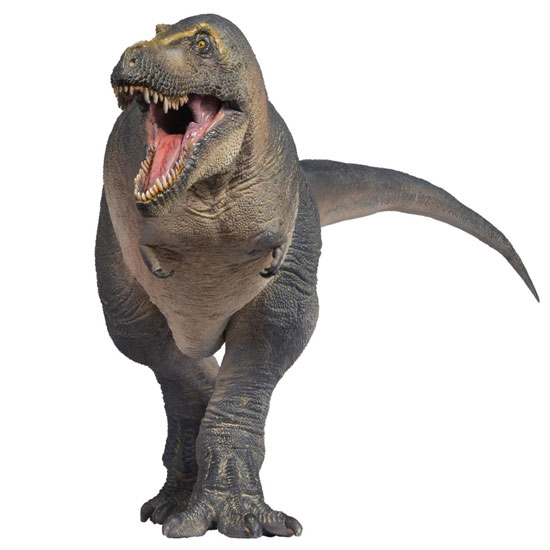Nearly Complete Juvenile Tarbosaurus Fossil Found
Scientists Discover Remains of Juvenile Tarbosaurus
A joint Japanese and Mongolian expedition have successfully recovered a nearly complete skeleton of a young dinosaur, a relative of the monstrous Tyrannosaurus rex. This rare and important find will enable palaeontologists to better understand how Theropod dinosaurs grew and developed.
Juvenile Tarbosaurus
The dinosaur, a Tarbosaurus (Tarbosaurus bataar) is a juvenile and the skeleton is nearly complete, all that is missing are some neck vertebrae and a few bones from the tip of the tail. Tarbosaurus was a member of the Tyrannosauridae and this creature is the largest known predator from Asia. Associated with the very end of the Cretaceous, just like its North American cousin T. rex (Maastrichtian faunal stage), this fierce carnivore grew up to 12 metres in length. Although known for at least sixty years, scientists still debate whether Tarbosaurus is sufficiently different from Tyrannosaurus rex to be regarded as a distinctive genus. The fossils found to date (there are more Tarbosaurus remains to study than its more famous relative T. rex), indicate that these two animals were very similar. There are minor differences in skull morphology, with Tarbosaurus having a proportionately larger head but a shallower snout and less powerfully built lower jaw. Some scientists claim that Tarbosaurus was more lightly built than Tyrannosaurus rex, perhaps the result of the slightly different ecosystem in Mongolia and China compared to Late Cretaceous western North America. A more agile, gracile predator Tarbosaurus may have specialised in tackling lighter prey animals.
The picture (above) shows a replica of a Tarbosaurus in the PNSO Age of Dinosaurs range.
To view this range of figures: PNSO Age of Dinosaurs Models and Figures.
The joint Mongolian/Japanese expedition, made up of scientists from the Mongolian Academy of Scientists and the Hayashibara Museum of Natural Sciences in Japan first found the fossilised remains of this dinosaur in August 2006. The skeleton was encased in a block of sandstone and it has taken nearly two years of careful, patience preparation to extract this young dinosaur from its rock tomb.
Commenting on the completeness of the fossil, Takuji Yokoyama, a spokesperson for the Hayashibara Museum stated:
“We were so lucky to have found remains that turned out to be a complete set of all the important parts”.
Fossilised Skeletons
Fossilised skeletons of young dinosaurs are extremely rare and the discovery of such a well-preserved and complete specimen is an exceptional find. The bones of juveniles, being lighter than adults are often scattered and broken up or destroyed by weathering on the surface. The corpse of a young dinosaur would have been attractive to any passing scavenger and many remains would have been devoured leaving little chance of fossilisation for the fragments that are left over. This fossil was probably covered very soon after death and this has led to the preservation of over 95% of the bones.
The latest discovery from the Gobi desert will help provide more information on the ontogeny of dinosaurs (growth rates and development). The animal was over 2 metres long when it died and it is believed to have been around the age of 5. It has not been possible to determine the gender, but had this dinosaur lived to reach adulthood it would have been the top predator of the area and may have exceeded 12 metres in length.


